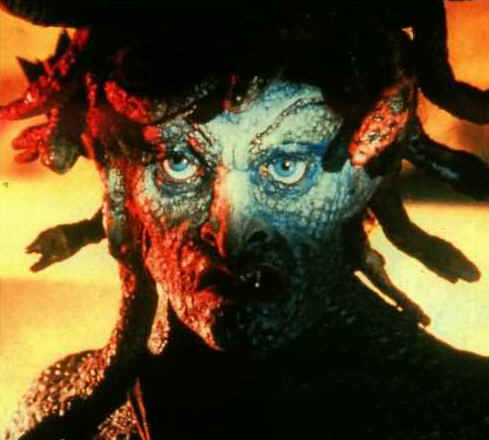Speedy ,Hank,Pinky,Dirty Chicken,Broken Neck Pinky
Editor’s note: Last fall, as part of my Master’s studies through Fort Hays State University, I enrolled in an independent reading project on the Bronze Age of the American comic book. Over a four-month period, I read several books and articles about the Bronze Age, and wrote a reaction paper about each. This is #11 of a 17-part series.

CODY STARBUCK, FROM EDITOR JON B. COOKE’S
COMIC BOOK ARTIST VOL. 2, #2.
(Illustration by Howard Chaykin)
Published by Top Shelf, © Jon B. Cooke, 2003
[Buy from Mile High]
COMIC BOOK ARTIST VOL. 2, #2.
(Illustration by Howard Chaykin)
Published by Top Shelf, © Jon B. Cooke, 2003
[Buy from Mile High]
As the previous two Reaction Papers made clear, industry leaders Marvel and DC did face some competition during the Bronze Age. But companies like Charlton (see Reaction Paper #9) and Atlas (Seaboard) (see Reaction Paper #10) were also-rans who competed with the “Big Two” via traditional newsstand distribution. By the end of the Bronze era in the mid-’80s, that newsstand distribution system would take a backseat to a direct sales market, one filled with a myriad of small, independent publishers. Long before then, in 1974, one visionary publisher would launch a comic book geared for the then-emerging market. And while Mike Friedrich’s Star*Reach might not have lasted long enough to reap the benefits, there is little doubt his company — also named Star*Reach — helped pave the way for the market revolution to come.
Friedrich and Star*Reach were the subject of a special section in editor Jon B. Cooke’s Comic Book Artist Vol. 2, # 2, published in October 2003. Over the course of three interviews with Friedrich, Cooke works to chronicle the history of the innovative publisher, and to establish where exactly Star*Reach fits into the big picture of comic-book history. From the very beginning, it was clear that Star*Reach was different from the mainstream publishers of the time. Using a business model that more closely resembled the underground comix system than the one used by mainstream publishers, Friedrich looked to publish “ground level” comics aimed at an older audience (p. 49). These older readers would get their comics from used bookstores, mail-order comics retailers, convention dealers, and some of the first actual comic-book stores; collectively, these outlets would grow into the direct market (p. 70). The material in Star*Reach would feature “fantasy material that had more of an adult flavor, whether it was science-fiction or humor” (p. 69). Early on, this material was produced by some of the biggest rising stars of the era — Howard Chaykin, Jim Starlin, P. Craig Russell, etc. — artists Friedrich had encountered during his earlier days as a writer for both DC and Marvel. The budding, young publisher — Friedrich was still in his 20s — was able to attract such top talent by offering them the chance to do more adult-oriented work (though not as sexually explicit as the undergrounds), ownership of that work, and royalty payments — concepts all foreign to the Big Two at the time (p. 59). And while it’s easy to romanticize such advances in creator rights, Friedrich also felt these moves were good business: “I was convinced the business model would take over the world” (p. 60).
Initially, the model worked extremely well. Star*Reach #1 (see Comics Bronze Age’s review) sold out its initial print run of 15,000 copies and eventually sold “somewhere around 30,000” (p. 62). Dozens of other comics — more issues of Star*Reach, and other titles, like Quack andImagine — soon followed. The company’s best year came in 1977, when Star Wars hit theaters and created a demand for “anything that had the word ‘star’ in it” (p. 67). But soon business missteps would take a toll on Star*Reach. Friedrich notes that the decision to move to color proved “disastrous,” pointing to both cost and quality issues (p. 71). He also notes that he “stopped really focusing on the commercial aspects of comics,” and started publishing books that were “less commercially interesting” (p. 71). By the end of the decade, Star*Reach was all but finished.
But Friedrich and the direct sales market he helped to develop were both there to stay. In January of 1980, the former publisher took a position at Marvel to help the industry leader retool its sales department to take advantage of the new distribution model. Following that, he went on to establish an agency that represented comic creators and advocated for their rights. Star*Reach might have been ahead of its time, but the concepts at the company’s core proved prescient.
You might also li




















 Here at
Here at 




















0 comments:
Post a Comment